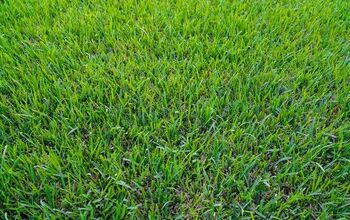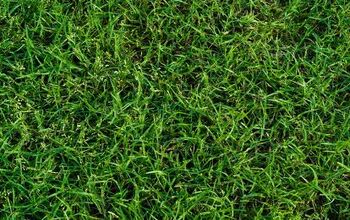Centipede Grass Vs St Augustine: Which Grass Is Better?

There are many types of grass, some of which grow better in certain areas. If you find yourself in the middle of choosing between, centipede grass, and St Augustine grass.
We are going to provide you with info on both, along with the pros and cons. Some people have difficulties telling these two apart, but we’re going to show you the differences.
The main difference between centipede grass and St Augustine is that the Centipede grass is slightly smaller and has pointed ends. It also features an alternating pattern unlike St Augustine grass. St Augustine grass is thicker with large, flat stems. Both are great grass options and are easy to care for.
When you want your lawn to look great, you must consider the amount of work that will go into maintaining that look.
Centipede grass, and St Augustine, are easy to grow, as long as you know how much to fertilize, and which bugs to keep away.
Do You Need Landscaping Services?
Get free, zero-commitment quotes from pro contractors near you.

Region
The first step in understanding what type of grasses to use is finding out what grows best in your region. Both centipede, and St Augustine grass, grow in similar regions. Using the United States Department of Agriculture, (USDA) zoning, centipede grows best in zones 7-10, and St Augustine, zones 8-10.
These grasses grow in central, southern, and some coastal regions. Both of these grasses do best in a warm, southern climate. Heat tolerant grasses, generally do not like the colder weather. Centipede grass will not go dormant in the winter, which can cause it to die in freezing conditions.
St Augustine grass will go dormant in the winter months, however, you must still water it occasionally in those months.
Centipede Grass
Centipede grass produces a medium-textured turf. It grows slowly at first and is easy to care for. This grass grows in thick, takes less maintenance, and looks great. It’s perfect for any homeowner, who wants a fine looking lawn, with less watering and care.
Centipede grass is less susceptible to insects, and diseases. This grass takes less fertilizer than St Augustine grass. It grows aggressively and produces a thick, weed-free turf. Centipede grass has very little shade tolerance and hates the cold. It grows best in a southern climate.
Centipede grass can be grown from seeds, sprigs, or sod. It produces surface runners, that quickly fill in the turf. It is smaller and slightly finer than St Augustine grass. The two grow in a very similar manner, with runners, and V-shaped blades. Centipede grass grows in (USDA) zones 7-10.
St. Augustine Grass
St Augustine grass is one of the best choices for lawns in southern climates. It has thick V-shaped blades. This grass is very shade tolerant, however, it can be damaged by cold temperatures. Make sure that you do no grow St Augustine too far north.
It produces a deep blue, to green turf, gets fairly thick, and is easy to walk on. Many lawns in the south, grow beautiful St Augustine grass. St Augustine is easy to control around edges, as long as you keep up with weed eating, and edging the yard. St Augustine grass grows in (USDA) zones 8-10
Types
One of the main benefits of St. Augustine grass is that there are several varieties to choose from. Each type of St. Augustine grass is unique and has a distinct look. The main types of St. Augustine grass are:
- Palmetto
- Bitter Blue
- Raleigh
- Floratum
Palemtto and Floratum are two of the most unique types of St. Augustine grass. Homeowners often choose Palmetto grass if you’re looking for St. Augustine grass that is soft to touch. However, Bitter Blue is the best option if you live in a colder climate as it can withstand lower temperatures.
Key Differences
Both of these grasses are easy to grow. They are very similar, in the way they grow, however, they have many differences.
Difference between centipede grass, and St Augustine grass:
- Centipede grass takes longer to grow from seed. St Augustine grows much faster than the centipede grass.
- The centipede grass has smaller runners. They are similar in shape, but not size. St Augustine has larger runners and blades.
Similarities between centipede grass, and St Augustine grass:
- Both of these grasses, do not do well with heavy foot traffic. They are best used for lawns and around roads.
- Both kinds of grass are easy to care for. They are low maintenance and do not take a lot of fertilizer.
You can tell the difference between the two, by the size of the grass blades. The centipede has smaller, slightly finer blades. St Augustine has large, rough grass blades.
Pros and Cons
Both of these grasses do well in southern climates. So here are some pros and cons for each, which might help you decide between the two.
Pros and cons of centipede grass:
| Pros | Cons |
| Centipede grass is very easy to maintain. | This grass needs lots of sunlight to grow. |
| This is a lower growing grass and is easy to mow. | Can suffer from grubs and bugs. |
| It is more cold-tolerant than St Augustine grass. | Centipede grass is not shade-tolerant. |
| Can be planted from seed, sprigs, or sod. | Takes a little longer to get started, then grows fast. |
Pros and cons of St Augustine grass:
| Pros | Cons |
| There are multiple varieties for this grass. | Does not grow in colder climates. |
| Does not need a lot of sunlight to do well. | Cannot be planted by seeds, sod only. |
| Has a dense, blue-green like color to the turf. | St Augustine grass can be killed by the chinch bug. |
| Wide coarse blades make a thick turf. | Doesn’t take well to foot traffic. |
If you live in the south, it may just come down to a matter of preference, between the two. The centipede grass has a slightly smaller blade.
The St Augustine blades are thick and make a luscious turf, that looks good in residential properties, and commercial properties.
Neither of these grasses reacts well to heavy foot traffic. Avoid using them on sports fields, or golf courses.
Tips For Growing In Southern Climates
Growing these two kinds of grasses is very easy. They both require a small amount of maintenance. The centipede grass is a little easier to take care of than the St Augustine grass.
Tips for growing grass in southern climates:
- Always protect yourself from the sun, when working on your lawn. Your grass may need at least 4 hours of sun a day, but you do not. Wear hats and sunscreen.
- These grasses can grow with very little water. St Augustine grows very well with not a whole lot of water. Centipede takes a little more water.
- Watch for insects, and fungal that may be killing the grass. Keep on top of identifying problems with these grasses. They can be susceptible to certain things.
- Water your grass in the morning. This way it stays cool during the hot parts of the day. The next best time to water is in the evening.
Use your best judgment, when trying to troubleshoot any problems with your yard. These grasses are relatively easy to grow, and shouldn’t give you much trouble.
Do You Need Landscaping Services?
Get free, zero-commitment quotes from pro contractors near you.

Related Questions
Can you mix Centipede and St. Augustine grass?
It would not be advised. Both of these grow very aggressively. The centipede has slightly smaller runners than St Augustine, but both will grow in strong around each other. Together the turf would look uneven.
How long does it take centipede grass to grow?
Centipede grass takes longer to grow, than St Augustine. The seeds take a while to germinate, but once they do, it starts to grow more aggressively. The seeds take on average, 30 days to germinate, and start growing.
Does centipede grass grow in shade?
Centipede grass can grow in shade, but full shade is not always ideal for it. Shifting shade is better for centipede grass and the occasional sunlight helps it grow. Centipede grass often grows underneath trees and gets bursts of sunlight throughout the day as the sun moves.

I'm a writer that is passionate about home improvements, remodeling, and renovating. I enjoy learning new skills and techniques and sharing them with others.
More by Chad Kilpatrick












![The 5 Best Angle Grinders – [2022 Reviews & Buyer's Guide]](https://cdn-fastly.upgradedhome.com/media/2023/07/31/9071326/the-5-best-angle-grinders-2022-reviews-buyer-s-guide.jpg?size=350x220)






![12 Washing Machine Brands to Avoid [with Recall Data]](https://cdn-fastly.upgradedhome.com/media/2023/07/31/9075781/12-washing-machine-brands-to-avoid-with-recall-data.jpg?size=350x220)







